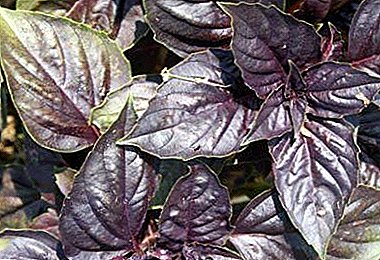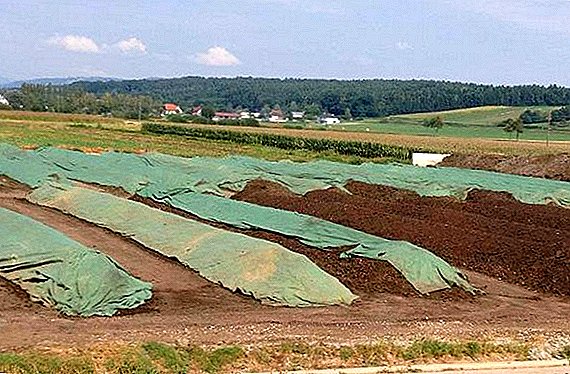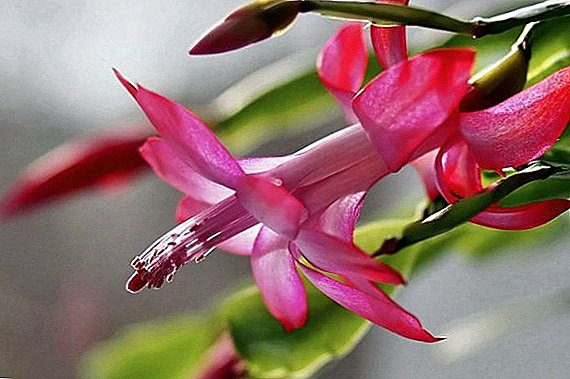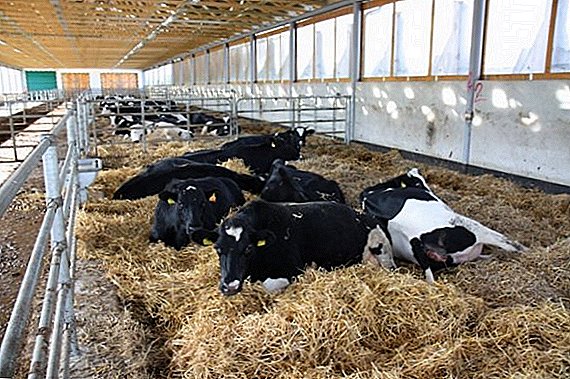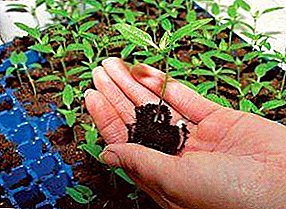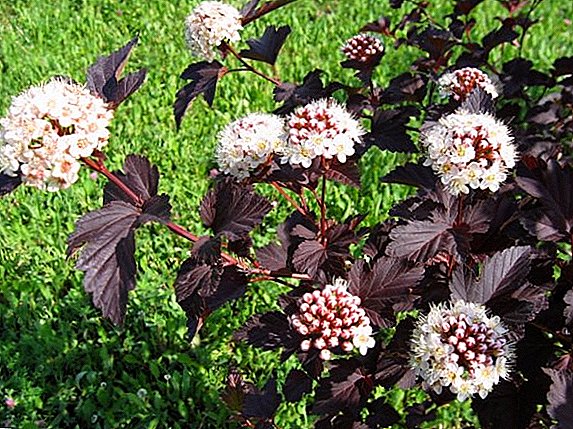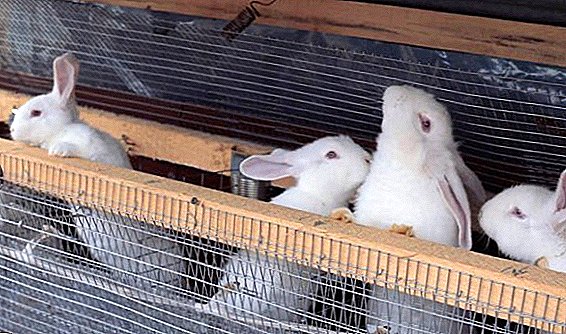 Rabbits are clean animals. Living on the outside in burrows, they dig special underground branches for the products of their vital activity, which they then bury. That is, in a rabbit hole there reigns a healthy atmosphere, improved by natural ventilation, which is due to the presence of several entrances. In the rabbit animals, the animals are completely at the mercy of man, on whom the creation of the optimal atmosphere for the existence of animals in their dwellings depends. How to achieve this, and the story goes on.
Rabbits are clean animals. Living on the outside in burrows, they dig special underground branches for the products of their vital activity, which they then bury. That is, in a rabbit hole there reigns a healthy atmosphere, improved by natural ventilation, which is due to the presence of several entrances. In the rabbit animals, the animals are completely at the mercy of man, on whom the creation of the optimal atmosphere for the existence of animals in their dwellings depends. How to achieve this, and the story goes on.
What is ventilation in the rabbit
Rabbit droppings are odorless and under normal conditions they only dry out in the air without deteriorating it, which is not the case with urine. Her rabbit allocates daily from 180 to 440 ml, depending on age and breed. It, among other things, contains from 130 to 160 mg of nitrogen and 16 to 26 mg of sulfur.
Unlike natural conditions, where litter and urine are on the ground separately, in rabbitks they willy-nilly mix and thereby activate the activity of bacteria, which very quickly turn excrement into anything that does not smell fragrant:
- ammonia;
- methane;
- hydrogen sulfide;
- kadaverina;
- carbon dioxide;
- indole;
- skatole;
- putrescine;
- mercaptans.
Special attention should be paid to vegetation growing rabbits according to the method of Mikhailov and in the pit.Besides them, many more smaller fractions are formed in that powerful bouquet of harmful substances that fall on fragile rabbit organisms. And it is clear, therefore, how necessary is effective ventilation in the rabbit.
How to separate urine and manure rabbits: video
Favorable conditions (microclimate) for rabbits
In addition to the purity of the atmosphere, to create an optimal microclimate in the rabbit, it is necessary:
- appropriate temperature conditions;
- humidity level;
- lack of drafts.
Learn about rabbit hygiene, dangerous overheating for a rabbit, how to keep rabbits in the winter outside.
Air temperature and humidity
Indoor rabbits slow down their growth if the temperature in these rooms drops below +16 degrees. Although they can withstand rather low temperatures, but with them animals only survive, and do not grow and gain weight, for which they, in fact, contain.
The humidity of the surrounding atmosphere, which is optimal for them in the range of 60-75%, is very essential for normal rabbit life. Lower humidity, as well as higher humidity, are equally unfavorable for these animals. 
Therefore, the humidity in the room must be monitored constantly with the help of a psychrometer, which simultaneously determines the temperature in the rabbit.
Important! Especially intolerable for rabbits is dampness in the rabbitry.
Air velocity (no drafts)
Equally dangerous for these creatures and drafts, which in the rabbitries should be avoided in any case. The optimum speed of movement of air masses inside them should not exceed 0.3 m per second. Exceeding this rate can lead to widespread colds.
Air composition
The fresh atmosphere in the rabbitry helps to improve the health of animals and their rapid growth. Experts have calculated that for every kilogram of live weight of any individual in the rabbitry in winter there should be at least three cubic meters of clean air, and in summer - at least six cubic meters. 
Types of ventilation devices in the room
Fresh air can enter the rabbit bowl either naturally, that is, by gravity through ventilation holes, or forcibly by injecting or sucking with special devices like a fan.
Natural (static)
Ventilation, through which air enters the rabbit by gravity, is the cheapest and is most often used in small rooms with a width of no more than 8 meters. It consists of a system of vents in the walls and ceiling of a room located at different levels, due to which air movement is formed due to the difference in pressure and temperature at the top and bottom.
Did you know? Rabbit is one of the animals of the Chinese calendar. In Vietnam, he was replaced by a cat, because the territory of this country is not found rabbits.
In summer, when all air vents are opened, as well as doors and windows, in order to avoid drafts, this is usually done only on one side of the room. 
Artificial (dynamic)
Mechanical ventilation, based on the forced injection of air into the rabbit or on its suction, is more expensive to operate, as it requires the purchase and installation of electric motors, as well as the payment of electricity consumed by them.
But it is more convenient to use, allows better control of the process of ventilation, it is well combined with means of heating the air and its purification.
How to independently make ventilation in the rabbit
The device of natural ventilation does not require large funds and efforts. It is only necessary to remember that, for example, hydrogen sulfide and carbon dioxide, being heavier than air, accumulate closer to the floor of the room, and ammonia, which is lighter than air, rises to the ceiling. The same thing happens with cold and warm air, respectively. Therefore, when constructing ventilation holes, these factors should be taken into account.
Creating a dynamic ventilation system requires much more money and effort.
Important! In no case it is impossible to delay the timely removal of waste products of animals from the rabbit.
Designing a ventilation system
In order to design a working ventilation system with maximum efficiency and with minimal risk for rabbits due to possible drafts, the volume of the room, the number of animals in it and the average annual, as well as the maximum and minimum temperatures in this region should be combined with the type of ventilation system electric motors, heaters power and air filter type.  Ventilation ducts in a large rabbit farm
Ventilation ducts in a large rabbit farm
Materials and tools
For the ventilation device with forced air flow are necessary:
- channel fan with a capacity of 180 cubic meters per hour;
- anemostat with a diameter of 20 cm;
- perforator;
- 3 aluminum corrugated pipes with a diameter of 12.5 cm;
- plastic tees;
- hose clamps;
Check out the options for industrial rabbit cages.
- self-tapping screws;
- plastic knee;
- check valve;
- plastic pipe with a diameter of 12 cm and a length of 50 cm;
- a heating device of any type and sufficient power for space heating.

Manufacturing steps
To arrange a rabbit compulsory ventilation system, you must:
- Using a perforator, make a hole at a height of 40 cm from the floor.
- Insert an anemostat into it to take in air from outside and regulate its supply.
- On the ceiling of the room along its entire width, using clamps, attach aluminum corrugated pipes, connecting them to each other by means of plastic tees. In this case, the third hole of the tees should be directed downwards.
- One of the ends of the resulting duct remains in the open inside the room, and the second is connected to the plastic bend.
- A hole is made in the wall of the room opposite it.
- The plastic pipe is inserted into it and fixed by solution.
- On one side, a knee is attached to it, and on the other, an external one, a channel fan is inserted into the pipe, the blades of which are directed outwards.
- Not far from the anemostat is a heater in the form of a small furnace or electric heater.
It should also be noted that in this design, the air, entering the room through the anemostat, passes by the heater in the form of a small furnace. The stove can be replaced with an electric heater, but in any case, in winter, the cold outside air will get warm before it enters the room.
Did you know? Forced ventilation is used not only by humans, but also by insects. In hot weather, a group of bees at the beehive's hive only deals with the fact that they constantly push air into their homes with their wings.The result is a simple, convenient and inexpensive ventilation system that, without creating drafts, produces an effective air exchange, while, if necessary, heating and drying the rabbit.
Clean air for clean rabbits is a guarantee of their health and comfortable existence. Knowing this, experienced rabbit breeders never forget about the ventilation system in the rabbitks, for which they receive additional growth, weight gain and offspring of their eared wards.
Secrets of the device optimal microclimate in the rabbitry: video
Reviews
A simple thing to put powerful fans, to hold air ducts of large section - suck all smells (along with rabbits). Industrialists are thinking of recovery systems (when incoming air exchanges heat with exiting coaxial pipes).
But the poor private trader has to dodge, how to do without money.
Here, in practice, we checked - the most profitable and reliable - to take air from underground premises (basements and cellars), and then sculpt any fans, air ducts - who is in that much.
I, for example, have a slightly different solution. The entire shed is half deep in the ground and the air is in contact with the soil. It turns out that cools a little in summer and warms up in winter. Fans 4 pcs plastic "doment" with a diameter of 125mm. Rarely do I turn on all 4. mostly work 2.

About the natural.
Take the 110 mm (sewer) pipe 2.5-3 meters long. Just stick your rabbit out of the window. Bring the lighter to the lower edge, you will be pleasantly surprised, the fire will go out, because the air flow is directed upwards. This principle (I think in many) in homes where there are boilers, stoves, etc.
Any tall pipe will pull out.
The question is where? We need to come up with a place about 30-40 cm from the floor (where ammonia is concentrated). This will be your natural extractor. But this is not enough. Pull it out, but you need fresh air to come from somewhere.
Need to think

I assert that the additionally acquired freezer chest will allow freezing bottles of water at night (up to 40 liters), combining it in cells during the day, and so on, and in the off-season, it will also store meat. And its price is tolerable and there is another benefit. And power consumption up to 2-4KW per day.
If you hang wet sheets in a room with rabbits and direct the air flow to them - this will reduce the temperature by 1-3 degrees, no more (due to evaporation). But here it is difficult to supply water to the sheets regularly, because The capillary effect is so weak (if the ends are lowered into the trough, for example), that evaporation will only come from the bottom of the sheet. "regular watering" is a bad option.



